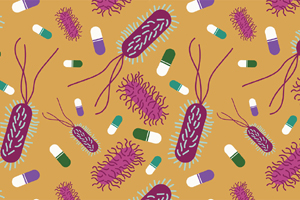
Tuesday June 2, 2020 ~ GENEVA | GLOBAL
by Mary Brooke, B.Sc. ~ West Shore Voice News
A record number of countries are now monitoring and reporting on antibiotic resistance, it was stated in a news release June 1 from the World Health Organization (WHO).
WHO says this marks a major step forward in the global fight against drug resistance.
“But the data they provide reveals that a worrying number of bacterial infections are increasingly resistant to the medicines at hand to treat them,” it was stated in the release.
Protecting availability of antimicrobial medicines:
“As we gather more evidence, we see more clearly and more worryingly how fast we are losing critically important antimicrobial medicines all over the world,” said Dr Tedros Adhanom Ghebreyesus, Director-General of the World Health Organization (WHO). “These data underscore the importance both of protecting the antimicrobials we have and developing new ones, to effectively treat infections, preserve health gains made in the last century and ensure a secure future.”
Since the WHO’s Global Antimicrobial Resistance and Use Surveillance System (GLASS) report in 2018, participation has grown exponentially. In only three years of existence, the system now aggregates data from more than 64 000 surveillance sites with more than 2 million patients enrolled from 66 countries across the world. In 2018 the number of surveillance sites was 729 across 22 countries.
More countries are also reporting on the recently approved indicator on antimicrobial resistance (AMR) as part of the Sustainable Development Goal monitoring. “The enormous expansion of countries, facilities and patients covered by the new AMR surveillance system allows us to better document the emerging public health threat of AMR,” said Hanan Balkhy, Assistant Director-General for antimicrobial resistance at WHO.
High rates of resistance:
High rates of resistance among antimicrobials frequently used to treat common infections, such as urinary tract infections or some forms of diarrhoea, indicate that the world is running out of effective ways to tackle these diseases. For instance, the rate of resistance to ciprofloxacin, an antimicrobial frequently used to treat urinary tract infections, varied from 8.4% to 92.9% in 33 reporting countries.
Aspects of antimicrobials in COVID-19 treatment:
WHO is concerned that the trend will further be fueled by the inappropriate use of antibiotics during the COVID-19 pandemic. Evidence shows that only small proportion of COVID-19 patients need antibiotics to treat subsequent bacterial infections and the Organization has issued guidance not to provide antibiotic therapy or prophylaxis to patients with mild COVID-19 or to patients with suspected or confirmed moderate COVID-19 illness unless there is a clinical indication to do so.
Dr Balkhy, said: “We believe this clear guidance on the use of antibiotics in the COVID-19 pandemic will both help countries tackle COVID-19 effectively and prevent the emergence and transmission of Antimicrobial Resistance (AMR) in the context of the pandemic.”
Investment needed for antimicrobial innovation:
WHO remains concerned by declining investment (including in the private sector) and lack of innovation in the development of new antimicrobial treatments — factors that are undermining efforts to combat drug-resistant infections.
“We must bolster global cooperation and partnerships including between the public and private sectors to provide financial and non-financial incentives for the development of new and innovative antimicrobials, added Balkhy.
To support this effort, WHO has released two documents on target product profiles to guide development of new treatments for common resistant bacterial infections and an economic model that simulates the costs, risks, and possible return on investment of antibacterial drug development.


